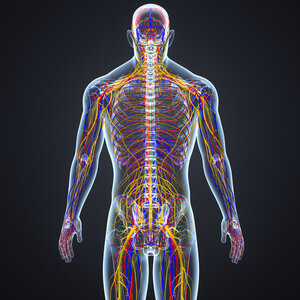Because it affects over 10 million Americans and because millions more are at risk, osteoporosis is a major public health threat. According to 2004 research, 80% of those that run the highest risk are post-menopausal Caucasian women. Ten million people already suffer from it and 18 million more will eventually, due to low bone mass, genetic predisposition, diet, and other factors that accelerates the risk. Eight million American women and 2 million men currently suffer from osteoporosis. One out of every 2 women, to one out of every 8 men over the age of 50 will suffer from an osteoporosis-related fracture at some point in their lifetimes, and is in the least a testament to the harsh reality that osteoporosis does not discriminate. While 10% of African American women over 50 have osteoporosis, add another 30% in to account for low or decreased bone density to accelerate the possibility of their suffering from the condition. Ostoeporosis is responsible for over 1.5 million fractures annually, including — and especially — wrist, vertebral (spinal), and hip fractures. The latter of which is one of the most life-threatening for some individuals, since it takes the hips so long to heal.
A large part of post-menopausal women's susceptibility is that menopause decreases the amount of estrogen faster than the body can create and replenish it, thereby endowing bone loss with more power in the female frame than it takes in the male. Petite and thin people also have an increased risk of developing the condition because less bone actually exists to begin with, which narrows their surface area and ultimately the plain of possible healthy tissue. Family and genetic history are nearly sure-fire indicators of one's likelihood of experiencing the effects of osteoporosis, just as one's nutritional, exercise, and lifestyle choices (e.g. smoking and drinking) impact the body and its many processes. If you have been diagnosed with osteoporosis, your doctor will probably recommend regular bone density tests.
 Osteoporosis does not affect life expectancy but it can affect quality of life. It is often tied up with frailty syndrome.
Osteoporosis does not affect life expectancy but it can affect quality of life. It is often tied up with frailty syndrome.
Men are by no means exempt from the possibility of being affected by this silent condition. Men are just as likely as women to slack off on exercise, nutrition, and monitoring related medical conditions, all of which could make your chances of getting osteoporosis much greater.
The American College of Physicians issued a clinical practice guideline for screening of osteoporosis in men. They recommend periodic assessments for fracture risk starting before age 65, with x-ray absorptiometry for men at increased risk.
It’s vital that men, along with women, explore and discuss their bone health with their physicians, largely because osteoporosis is preventable.
A recent study has shown the people with osteoporosis are more likely to have benign positional vertigo - the most common type of vertigo - than those with healthy bones. The exact connection is unknown. Research is needed to determine whether the treating osteoporosis and restoring normal calcium metabolism in such patients results in a reduction in vertigo symptoms.

